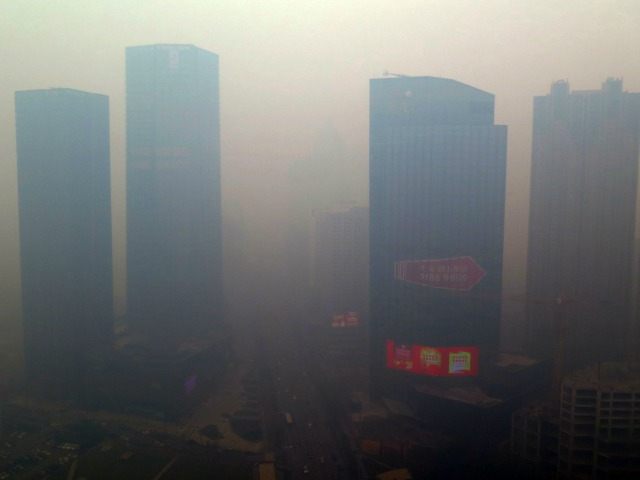Long one of the world’s worst polluters, a large part of mainland China is now surrounded by a pall of unbreathable smog that at times reaches levels of particulates 50 times higher than the maximum levels set by the World Health Organization.
Residents in Liaoning Province, in northeast China, were forced to stay in their houses on November 8, many of them wearing breathing masks, after the homes were completely shrouded by smog. The area has recently registered record levels of PM2.5, a tiny particle that according to doctors increases the risk of cancer and heart disease.
In some areas of the city the concentration has exceeded 1,400 PM2.5 micrograms per cubic meter, an amount approximately 56 times greater than the levels considered acceptable by WHO.
Concentration of fine particles recently reached a level of 860 micrograms per cubic meter in Changchun, the capital of Jilin Province in Northeast China, almost 35 times the level of 25 micrograms set by WHO as a maximum safe level for a 24-hour average.
In Shenyang, capital of Liaoning Province, the concentration was higher still, reaching 1,157 micrograms. There was so much smog in the city that visibility was reduced to 100 meters, according to reports from the Chinese state television CCTV.
The official state news agency, Xinhua, published a series of photos showing the streets of the city blanketed in pollution, with the title “Fairyland or Doomsday?”
According to the Associated Press, Sunday’s pollution levels represented one of the worst recorded levels in China since authorities began releasing air pollution data in 2013.
Shenyang, an industrial city since the days of Mao Zedong, has recently sought to reduce pollution by transferring factories and beginning to use natural gas instead of coal for heating.
The chronic problem of pollution in China has been linked to hundreds of thousands of premature deaths and has become one of the most common reasons for hostility to the government in Beijing. The fine particles are believed to play a role in cardiovascular disease, lung problems, cancer, and emphysema.
Follow Thomas D. Williams on Twitter @tdwilliamsrome

COMMENTS
Please let us know if you're having issues with commenting.